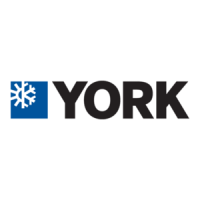
Do you have a question about the York D3CG120 and is the answer not in the manual?
| Model | D3CG120 |
|---|---|
| Cooling Capacity | 120, 000 BTU/h |
| EER | 10.5 |
| Refrigerant | R-410A |
| Phase | 3 |
| Compressor Type | Scroll |
| Type | Split System Air Conditioner |
| Voltage | 208-230V |
YORK Model DCG units are single package air conditioners with gas heat designed for outdoor installation on a rooftop or a slab.
Steps to follow if gas is smelled: 1. Open windows. 2. Don't touch electrical switches 3. Extinguish any open flame. 4. Immediately call your gas supplier.
Do not store or use gasoline or other flammable vapors and liquids in the vicinity of this or any other appliance.
Inspect for transit damage and refer to related forms for installation and service information.
Install units per national and local safety codes. Refer to application data for unit adjustments.
Select location for outdoor installation with adequate air supply, avoiding contaminated air sources.
Handle units with care using proper lifting techniques and equipment to prevent damage.
Maintain specified clearances for operation and service, ensuring unobstructed air discharge.
Design ductwork per ACCA standards, ensuring proper airflow and connection to the unit.
Install and adjust the barometric relief or fixed outdoor air intake damper assembly for proper airflow.
Properly plumb condensate drain and handle compressors carefully per instructions.
Ensure filters are correctly installed and understand service access panel locations.
Field wiring must comply with electrical codes, using proper connectors and grounding.
Properly size and install gas piping, check gas valve operation, and test for leaks.
Understand combustion discharge and ensure safe gas supply connection.
Refer to wiring diagrams for correct electrical connections to thermostats and unit components.
Convert units to L.P. gas using kits, adhere to safety standards and pressure requirements.
Install vent and combustion air hoods correctly to ensure proper unit ventilation and function.
Assemble the optional economizer rain hood, including filters and gasketing, according to procedures.
Carefully adjust enthalpy setpoints for economizer operation to optimize performance.
Refer to physical data tables for unit dimensions, weights, and component specifications.
Consult blower performance charts for CFM, ESP, BHP, and KW at various speeds and models.
Follow dimension diagrams for installation, utility entry points, and duct cover procedures.
Maintain specified clearances around the unit for proper airflow, servicing, and safety.
Consult blower performance tables for CFM, ESP, BHP, and KW at various speeds and models.
Review blower motor and drive data, including pulley adjustments and motor specifications.
Note accessory static resistances to adjust for total system resistance.
Understand the cooling system, preliminary start-up, and sequence of operation.
Familiarize yourself with safety controls like freezestat, high pressure, and low pressure switches.
Learn the operation sequence for both continuous and intermittent blower modes during heating.
Understand limit controls, centrifugal switch, redundant gas valve, flame sensor, and rollout switch functions.
Set heat anticipators correctly and complete pre-start checklist for safe operation.
Follow procedures for lighting pilot/burners and shutting down the unit safely.
Perform post-start checks, adjust manifold gas pressure, and check pilot flame alignment.
Learn how to access burners, pilot, and orifices for maintenance or replacement.
Adjust burner air shutters for proper flame appearance and check supply air CFM.
Measure supply air CFM using pressure drop data and pulley adjustments.
Adjust blower CFM to achieve the specified temperature rise and ensure proper operation.
Verify natural gas input by measuring meter time and using gas rate tables.
Secure owner's approval and provide training on unit operation and settings.
Perform routine maintenance including filter checks, motor checks, coil cleaning, and discharge inspection.
Clean flue passages and heating elements if soot build-up occurs, following specific procedures.
Follow safety precautions before troubleshooting, label wires, and verify voltage.
Troubleshoot issues where the blower or draft motor fails to operate or start correctly.
Diagnose and resolve problems with furnace ignition, sparkers, and pilot flame detection.
Troubleshoot pilot ignition failures, main burner ignition, and erratic flame characteristics.
Identify and obtain replacement parts using model numbers and part lists.




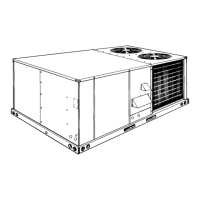



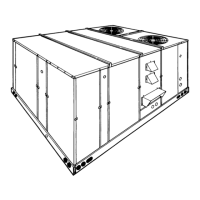
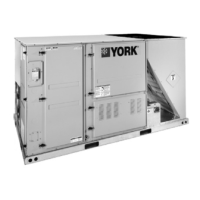
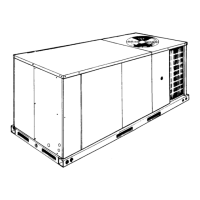
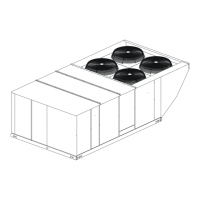
